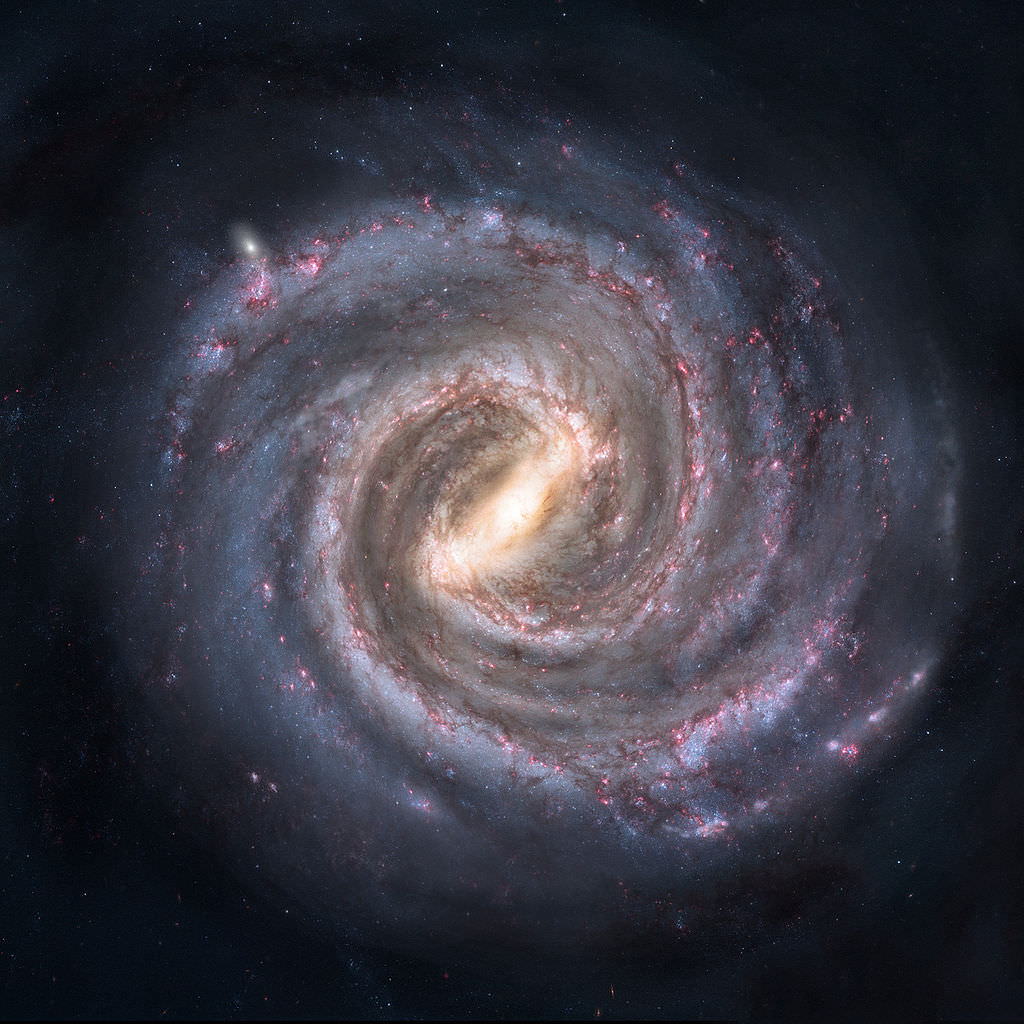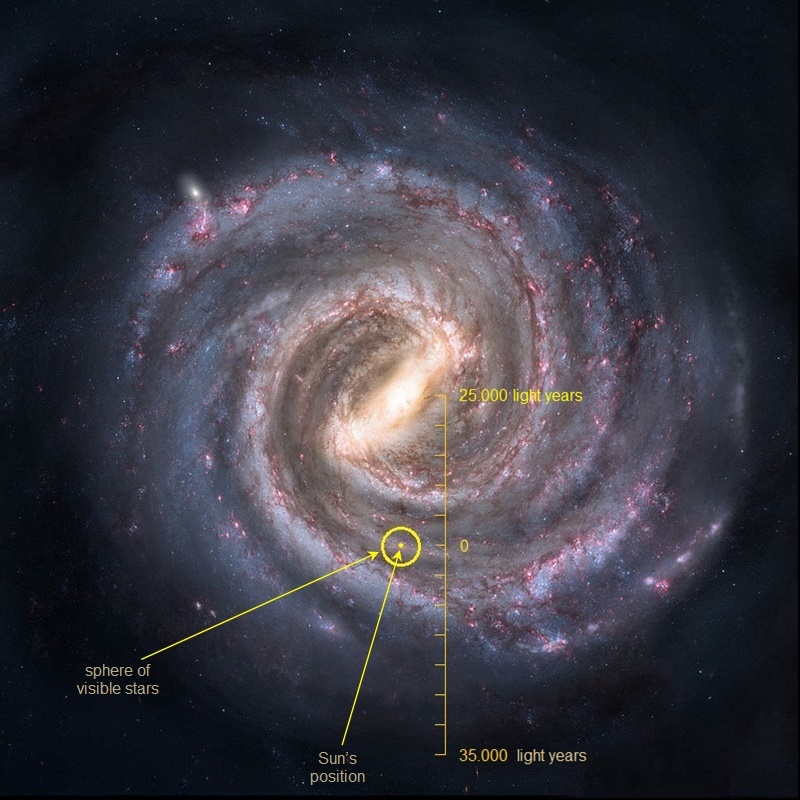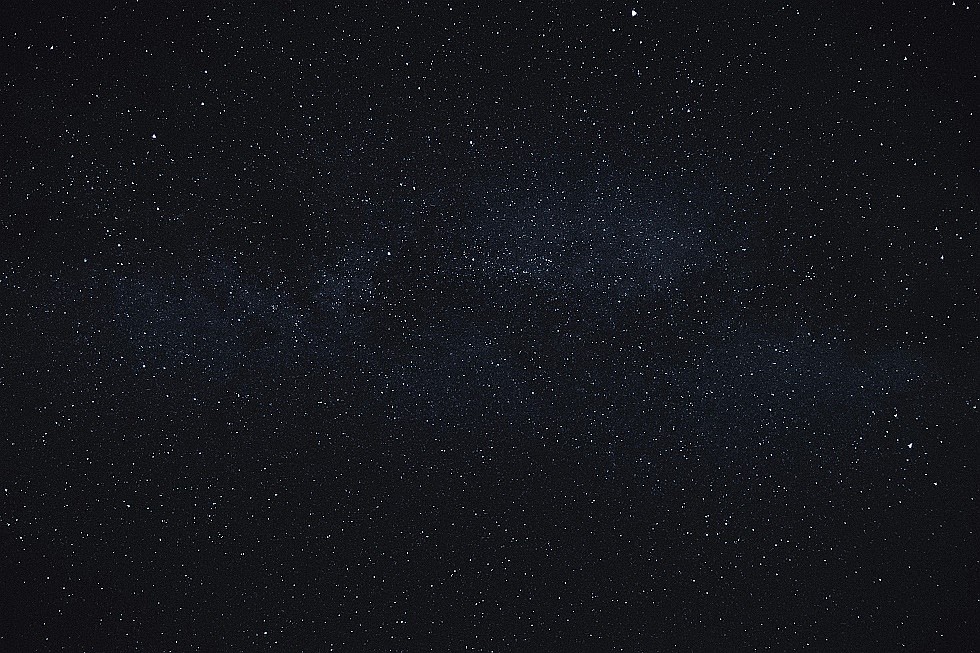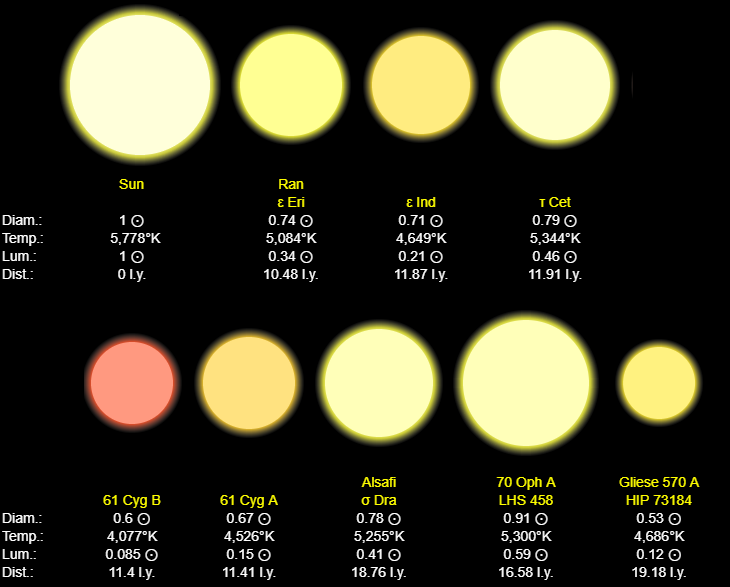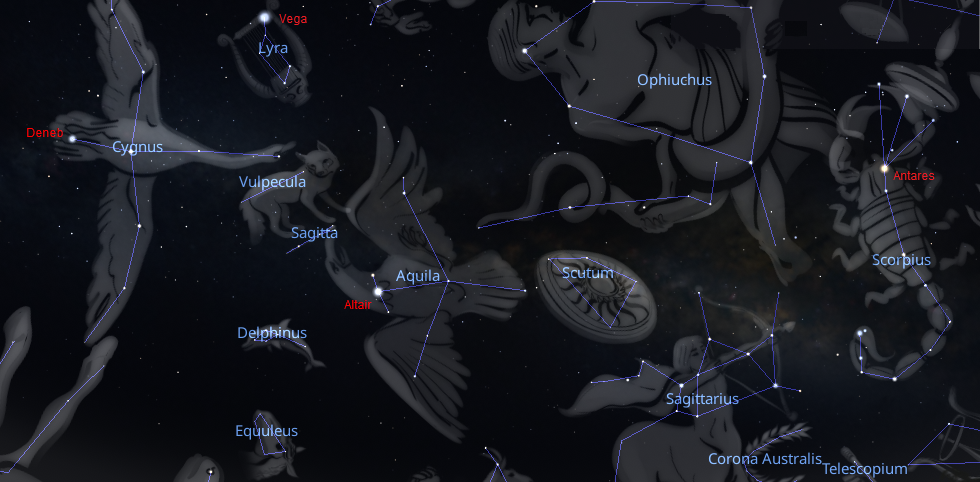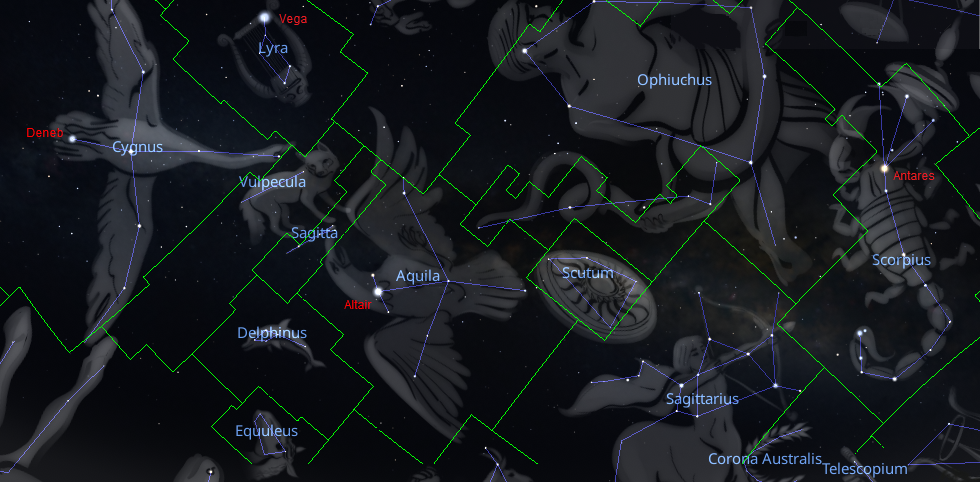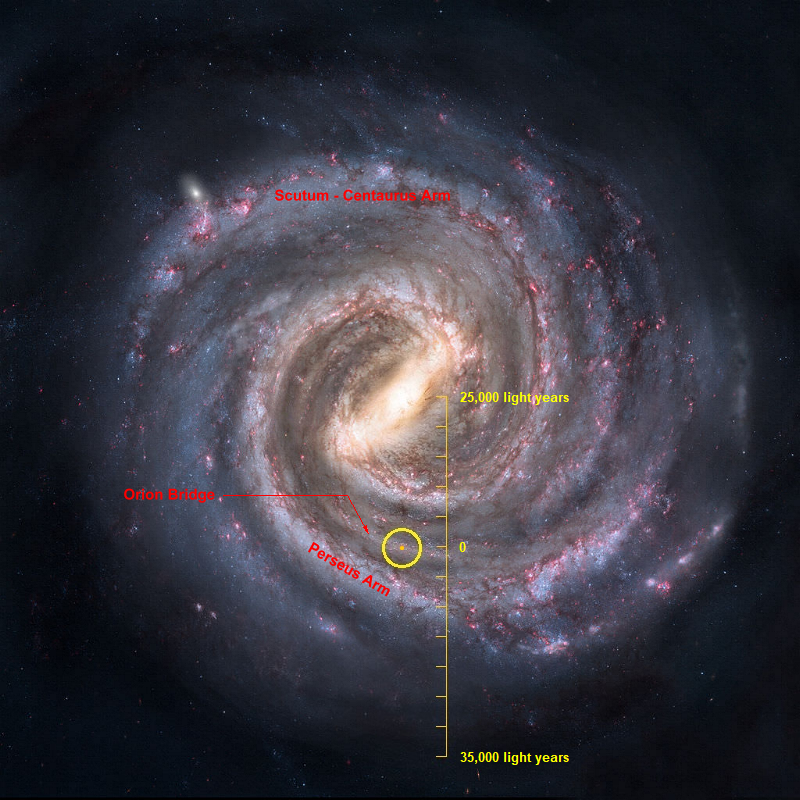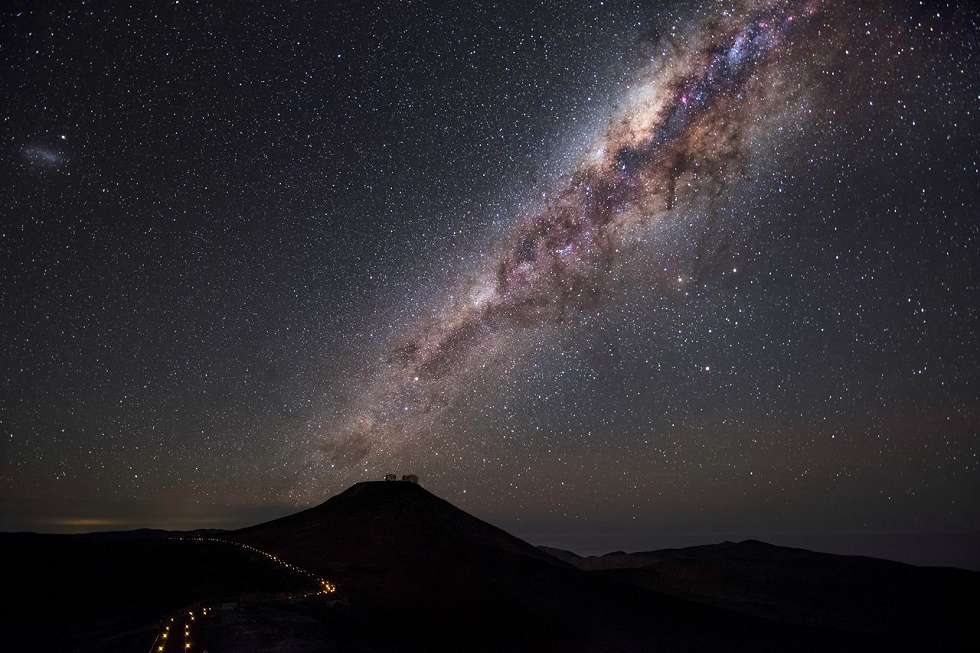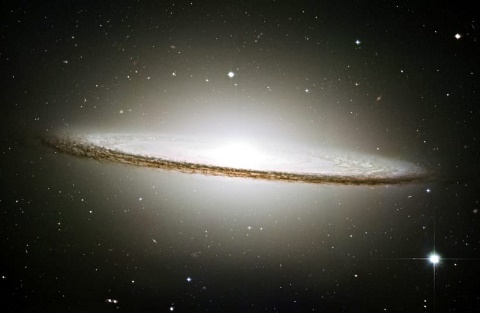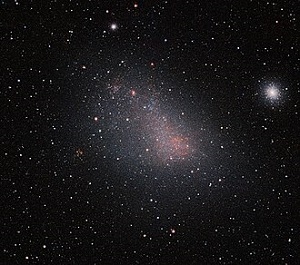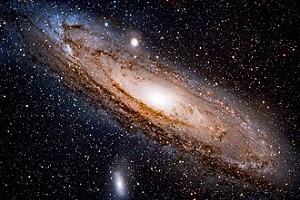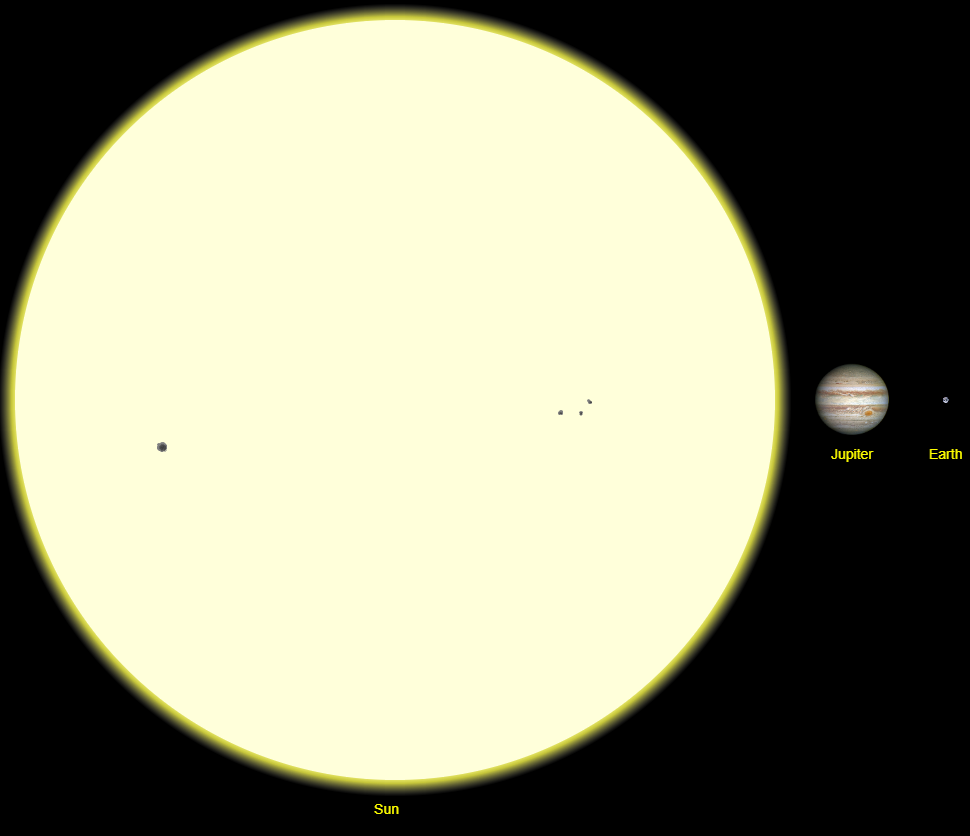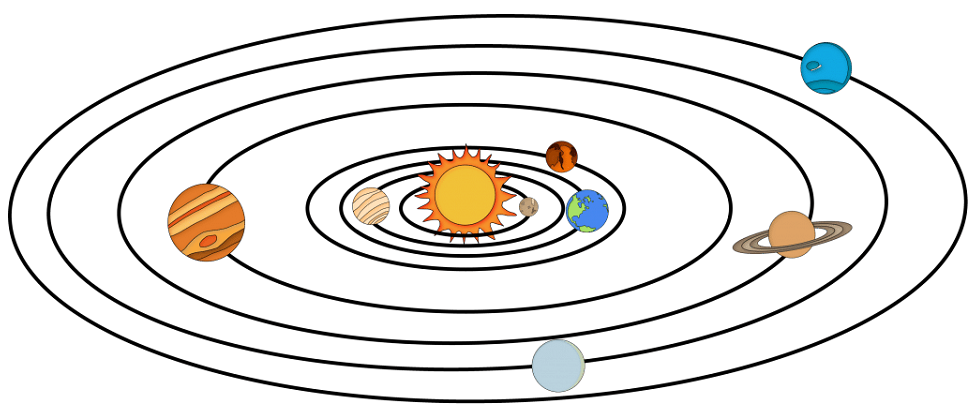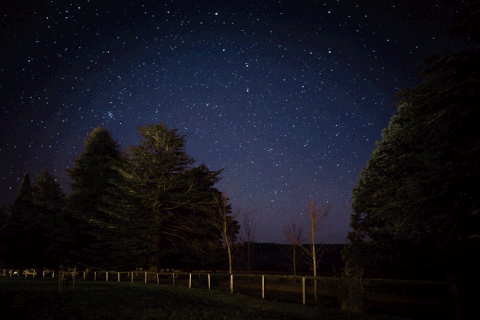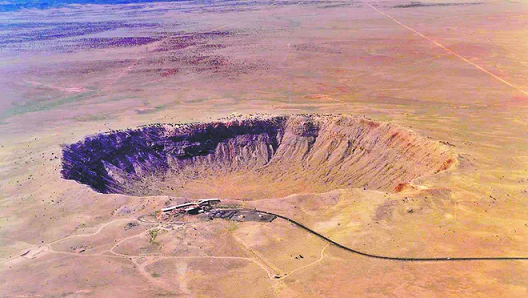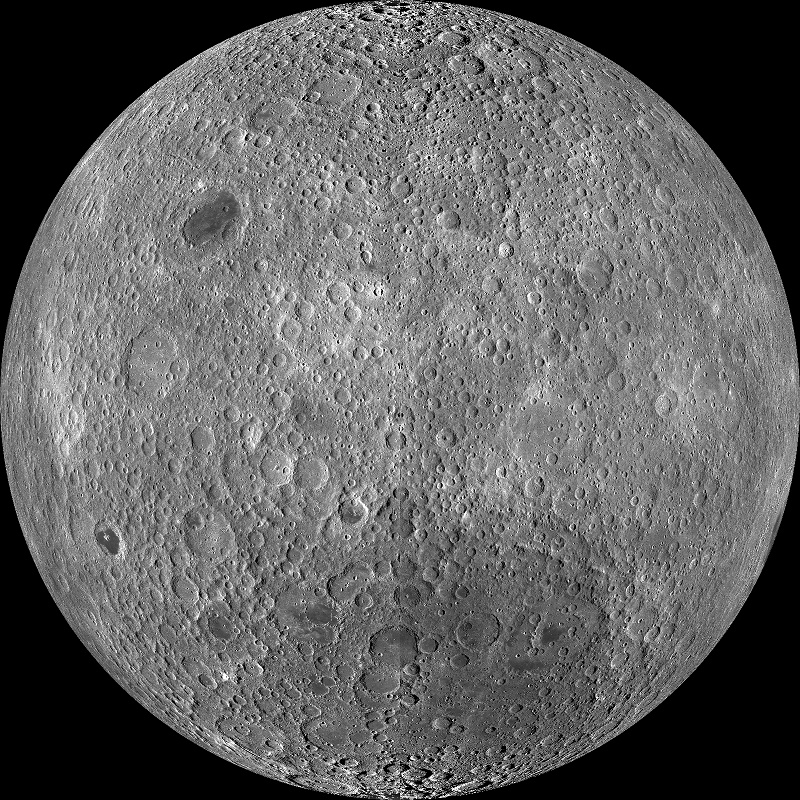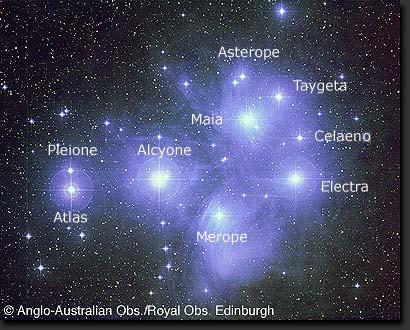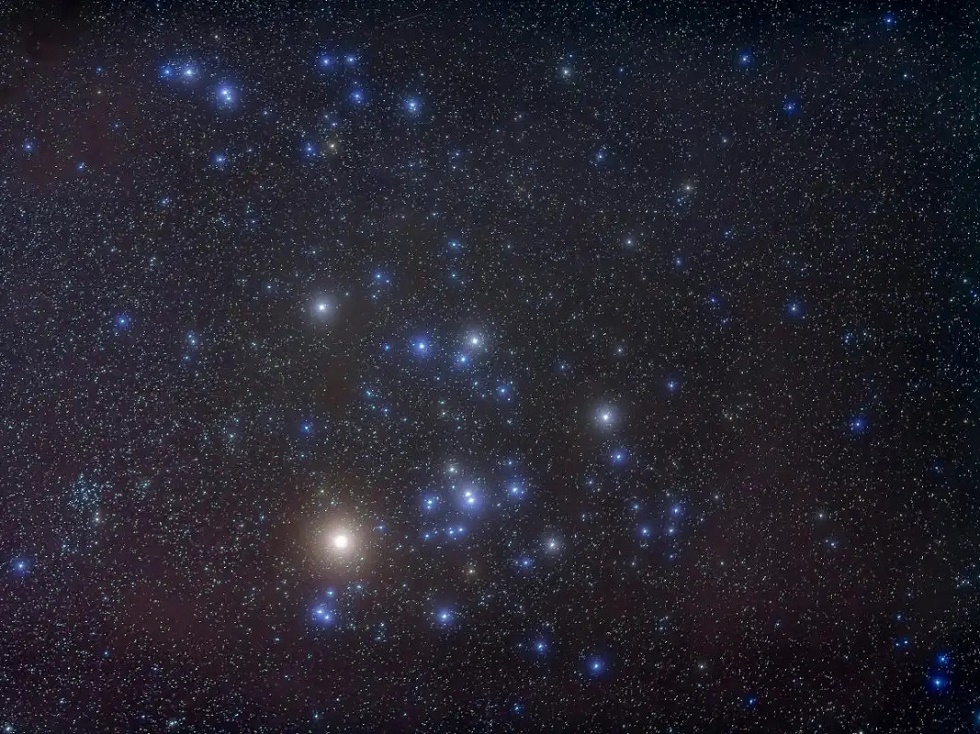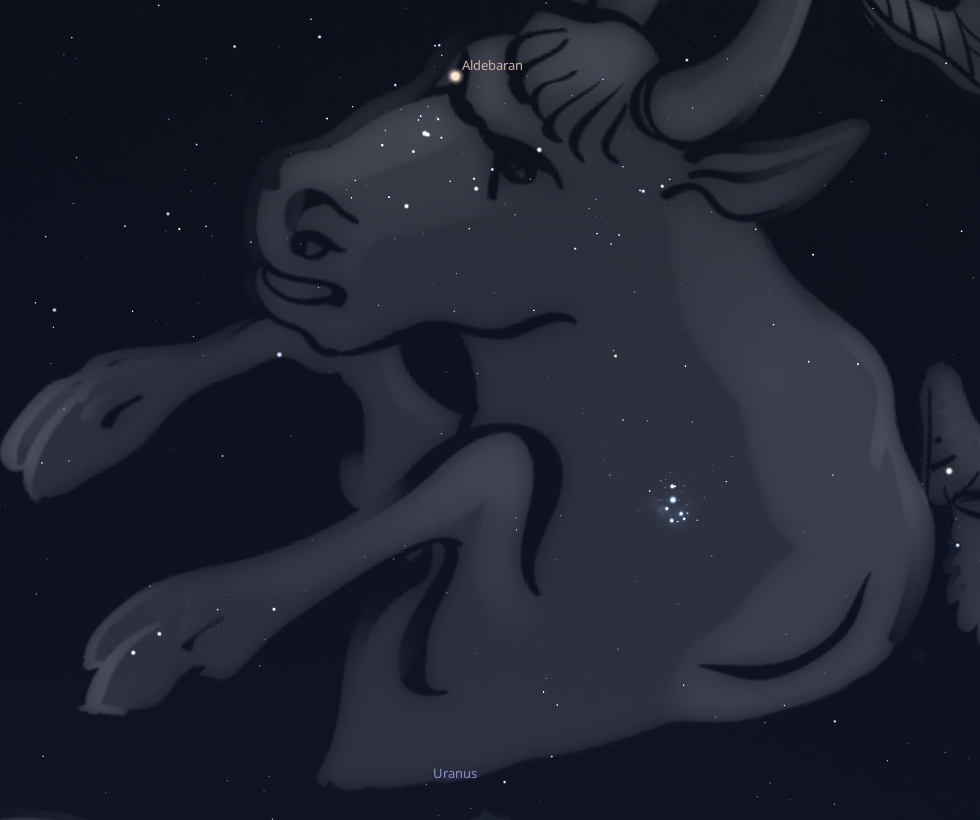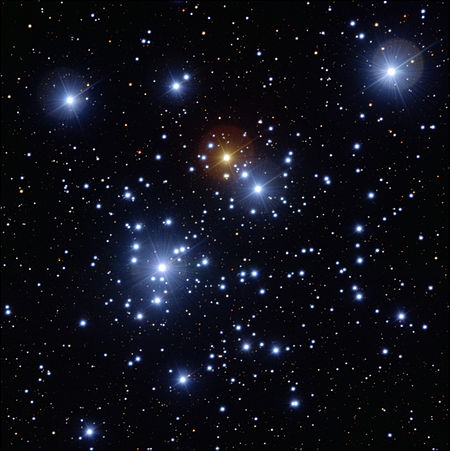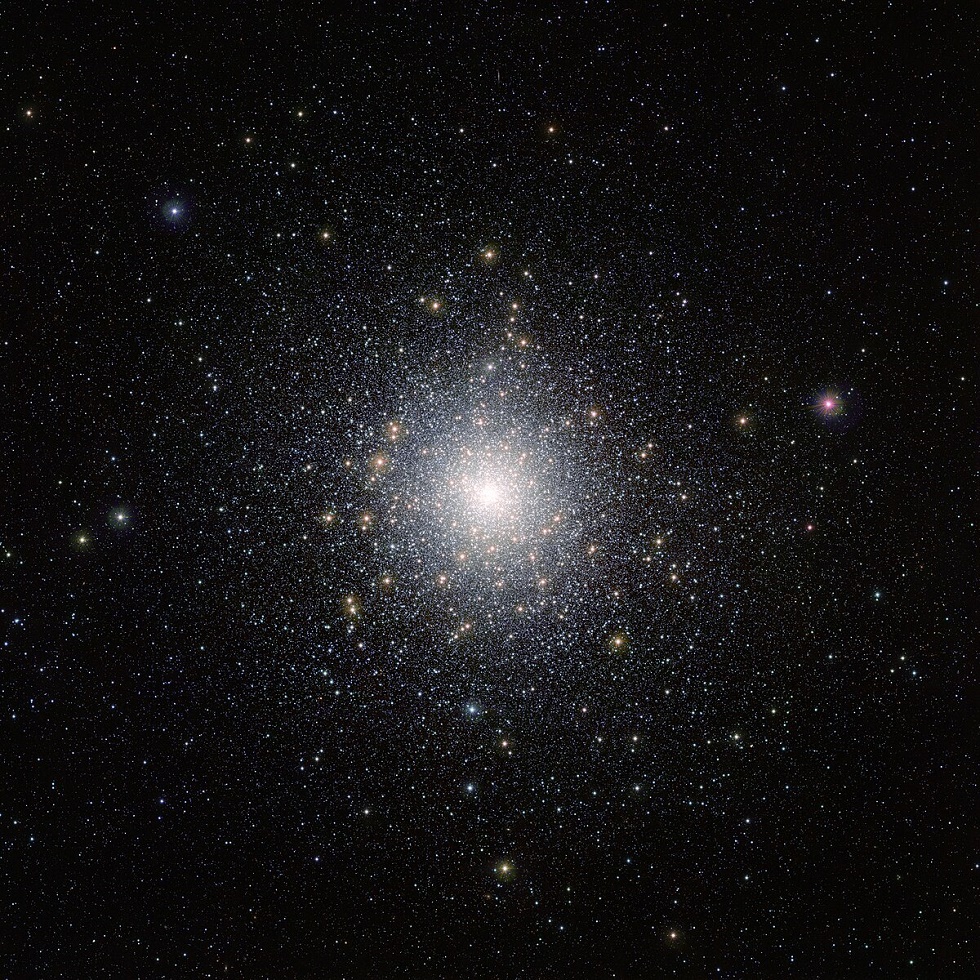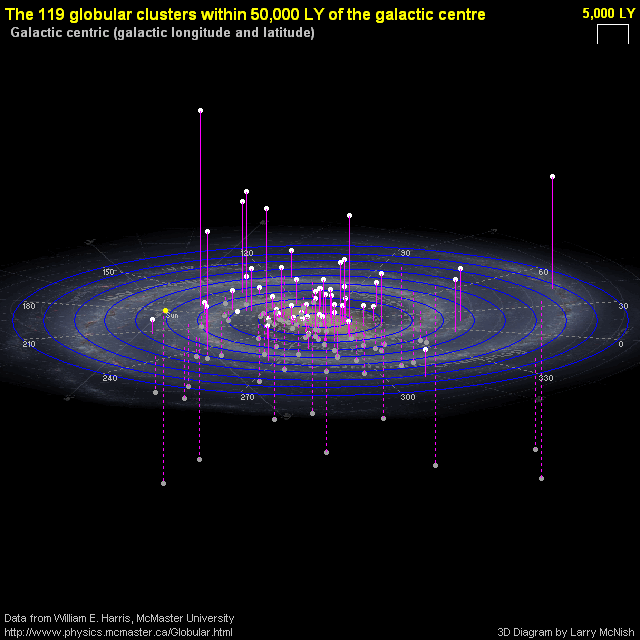What Is It That We See When We Look at the Night Sky? |
|
||||||||||||||||||||||||||||||||||||||||||||||||||||||||||||||||||||||||||||||||||||||||||||||||||||||
|
This is the second “installment” in our crash course “Elementary Astronomy” (or: astronomy that everyone can understand). In the first “installment” we learned Why the Sky Looks Like a Dome (although it isn’t one). In this one we’ll learn what it is that we see with the bare eye when we turn our gaze onto the night sky. We see stars, all right. But what kind of stars? Where are those stars, how far away? But also: what is there that we don’t see? All right, so let’s start with the basics. 1. How many starsThe night sky, when we get the chance to look at it away from the light pollution of cities (or even towns and villages in our times), appears as if it contains millions of stars. Right? But this is an optical illusion. The reason for this illusion is that we usually have no experience in estimating large numbers, so our estimation mechanism falls far short of coming up with a correct number. The approximate number of stars that we see under excellent conditions (no lights around and a dry atmosphere) is around 9,000, but in both hemispheres. That is, we’d be able to see 9,000 stars if we were in space and could look in all available directions. But since we’re on our planet Earth, and the Earth (the ground) blocks half of the entire sky, we can actually see around 4,500 stars on the sky “dome” (which, as we learned, is not a dome — see link at the top). 2. How far into the galaxy are the stars that we see?Let’s clear this out at the outset: when we talk about “the stars that we see” we mean with bare eyes. No telescopes. No binoculars. No lenses that magnify things in any way. Just a pair of eyes, possibly correcting our vision with glasses in case we’re shortsighted or suffer from astigmatism. So: all the stars that we see are within our galaxy, the Milky Way Galaxy. But they’re only a tiny portion of it. The rest of the Milky Way, i.e., its stars and whatever else it contains, we don’t see it. But first, wait! What is a galaxy? A galaxy is a very large collection of stars, usually numbering in the billions, all swirling around a center, often creating the image of a whirlpool. Here’s what our galaxy, the Milky Way, looks like:
Caveat: the above, of course, is not the real Milky Way. We can’t have a true photograph of the Milky Way because we can’t travel so far away and take a picture of it from the outside! (How ridiculously close to the Earth is the farthest we’ve traveled so far? Even a single pixel would be too much to show the distance in the above image.) What we see above is an artist’s conception (an excellent and detailed one) of the Milky Way. So whenever we want to depict the Milky Way we have to resort to something that can’t be a true picture — that’s the catch. The above image shows the Milky Way face-on. It is a barred spiral galaxy, meaning that its central bulge (the brightest part in its center) is like a bar, from the two ends of which two main spiral arms start and swirl around the galaxy. There are secondary spirals between the two main ones. That’s just one kind of galaxy. There are different kinds. Besides the spiral galaxies like ours there can be elliptical, irregular, and also other types of galaxies. How many are the stars of the Milky Way? It is very difficult to estimate their number (because we can’t see them all), but it is believed that there are between 100 and 400 billion stars in our galaxy. All right. Having seen what our Milky Way galaxy approximately looks like, let’s answer the question: where, and how far into the Milky Way are the stars that we see with bare eyes? Once again, “A picture is worth 1000 words”. Here’s the answer by means of a picture:
The above image says it all: Our Sun’s position is marked by one of the two arrows. Don’t imagine that the Sun is the entire yellow dot at the center of the yellow circle! No way! We’d need an electron microscope to actually see the Sun at that scale! The yellow dot simply marks the location of the Sun, very roughly, within the Milky Way. (If you’re wondering why we talk about the Sun and not the Earth, well, we’d also need an electron microscope to see the Sun and the Earth separately at the above scale. And the Earth is so tiny compared to the Sun that we’d need to search real hard to locate it in the vicinity of the Sun.) The yellow circle centered on the dot of the Sun shows how far the stars that are visible by the naked eye go: up to 3,000 light years away from us (from the Sun). That’s the radius of the yellow circle. You have to imagine the yellow circle as representing a sphere around the Sun, of course. A convenient unit for measuring distances in astronomy is the light year. A light year is the distance traveled by a photon (a particle of light) in one year. (Don’t be confused by the word “year” in “light year”; a light year is a unit for measuring distance, just like “kilometer” or “mile”.) So: the farthest visible stars, those at the edge (perimeter) of the yellow circle, are around 3,000 light years away. This means that their light takes 3,000 years to reach us. What happens beyond that distance? Beyond that distance we can’t see individual stars with our bare eyes. We see only a “milky” substance where there are concentrations of stars, which is what the ancients saw and named the galaxy “Milky Way”. (Actually, the ancients weren’t speaking English, as you probably know. They named the thing just “Galaxy” – “Galaxías”, which in Greek means “Milky Way”; from “gála”, meaning “milk”.) There’s a ruler on the image. The 0 (zero) of the ruler is placed at the Sun. Each step on this ruler is 5,000 light years. So, the ruler shows us that the Sun is approximately 25,000 light years from the center of our galaxy (where a large black hole exists — more about black holes in another “installment” of astronomical knowledge), and around 35,000 light years from the visible (with telescopes) edge of our galaxy. So, we’re not at mid-distance, but rather a bit closer to the center. 3. Amazing! All the stars that we can see with bare eyes are larger than the Sun!This is a bit counterintuitive: when we look in the sky (always with bare eyes, not using magnifying lenses of any sort), practically all the stars that we see are larger than our Sun! “Larger” means that if any one of them was put next to the Sun, its diameter would be larger than the diameter of the Sun. (Note: the word “practically”, above, in “practically all stars”, means that there are a few stars [eight in particular, see them all further below] that are visible with the naked eye and are smaller than the Sun. So, they are few and far between, and one needs to know where to look at to spot them.) Does the above mean that the Sun is one of the tiniest stars that exist? Not at all! Our Sun in reality is a bit above average in terms of sizes. Not too large, but definitely not tiny. The thing is, there are more stars that are smaller than the Sun than there are larger than it. But how can that be, given what was said earlier, i.e., that practically all stars that we see with the bare eye are larger than the Sun? The answer is obvious: those many more stars that are smaller than the Sun are invisible to the bare eye. We can’t see them.
Imagine: all stars that we see (save only eight) are larger than the Sun! An analogy to help us understand this fact is the following: suppose you are an intelligent mouse. Suppose also that there are no insects or other critters in your environment, only mammals and birds. You observe your world, and practically all the animals that you can see with your bare eyes are larger than yourself! You appear to be the smallest, barring the occasional hummingbird, or some even smaller mouse. But that’s an illusion. You grab your microscope (we said you’re an intelligent mouse!), and then, under your objective lens, you realize that there are bacteria everywhere! And their number far exceeds the number of animals that you can see without your microscope. So: the mouse in the above analogy is our Sun. Its microscope is our telescopes. The other animals are the stars that we can see with our bare eyes. But what corresponds to bacteria? The “bacteria” of our galaxy are stars that are called red dwarfs. Let’s see an example of a red dwarf, probably the most famous one. It’s the star closest to our Sun, known as “Proxima Centauri”:
Comparison of sizes and colors (temperatures) of the three alpha Centauri stars and our Sun The three stars on the left are the three components of the star “alpha Centauri”, abbreviated as: “α Cen”. That is, using only our bare eye we see a single star on the sky (from southern latitudes only), which we call α Centauri. But by using a powerful telescope we can see that α Cen consists of three different stars, two of which are comparable to our Sun in size and color (i.e., temperature, because the color of a star is a direct result of its surface temperature). Those two are Rigil Centauri (denoted as α Cen A), and Toliman (denoted as α Cen B). But the third one, Proxima Centauri (denoted as α Cen C) is a red dwarf — one of those “bacteria” that swarm the galaxy in huge numbers. Red dwarfs are red because they are cooler. The Sun is yellow (in its true color, not in the way we perceive it from the Earth) because it’s hotter than the red dwarfs. Specifically, the temperature at the surface of red dwarfs is barely over 3000°C, whereas our Sun has a surface temperature of 5500°C. And which exactly are those few stars that are smaller than our Sun but can still be seen with the bare eye? Well, here they are, all of them, shown in the next image in comparison to the Sun:
Some of their physical data are included in the above image: Diameter (as a ratio of the Sun’s diameter, which is assumed equal to 1); Temperature (in degrees Kelvin, (°K), which is 273 more than °C); Luminosity (Sun = 1); and Distance from us in light years (l.y.). Note 1: Toliman (the α Cen B star), although smaller than the Sun, is not included above because it cannot be resolved from Rigil Centauri (α Cen A) with the bare eye, and Rigil is larger than the Sun. Note 2: In the above image, we see some conventions regarding star names: some (a few) have a proper name, such as “Ran” and “Alsafi”. Others are named with a letter and an abbreviation of the constellation in which they belong. We’ll learn about constellations immediately below (§4). Yet others are named with some initials that refer to a star catalogue (such as the Gliese catalogue of nearby stars, or the Hipparcos star catalogue), followed by a number. We shall learn about star names in §5. 4. What is a Constellation?When we look at the night sky, we don’t see stars arranged completely regularly on it. Instead, we see them coming in groups. Where each group ends and where another one starts is not always very clear, but roughly we can identify groups. Why is that? There are two reasons:
We see that, even though the dots were created randomly by a distribution that is called uniform in statistics, the dots are not regular. There are some gaping holes in them, and some dots seem to be grouped together: in pairs, in triplets, or in larger groups; and some of the dots seem to be arranged along lines. (For example, observe one or two lines at the upper-right corner.) That’s one reason we see groups of stars in the sky.
In any case, ancient peoples grouped stars together and gave names to the groups, which are known as constellations. In antiquity, constellations were associated with mythological characters. Today they are a helpful way for us to refer to stars. For example, calling a star “beta Crucis” tells us that the star is in the constellation of Crux (the Southern Cross; “Crucis” is the Latin genitive case of “Crux”, so it means “of Crux”). Thus we know approximately where the star is located, assuming we know where the Southern Cross is. The image below gives an idea of how constellations are arranged in the sky:
Above are shown a few of the constellations seen from northern latitudes. Their names are noted: Cygnus (Swan), Aquila (Eagle), Scorpius (Scorpion), etc. All constellation names are in Latin. So when we want to say that a star is “of constellation X”, we use the Latin genitive case, corresponding to “X’s” in English. Thus, “of Cygnus” becomes “Cygni”; “of Aquila” becomes “Aquilae”; “of Scorpius” becomes “Scorpii”; and so on. If one is an astronomer, it is important that one learns the genitive cases along with the nominative ones (the “normal” or “direct” cases), of the constellation names, always in Latin. In the above image we also see:
Note: the above is the Western “carving” of the sky into constellations. Western constellations, in the northern part of the sky, are usually based on Greek mythology. The Greeks passed their knowledge of astronomy to the Romans, from whom the Western world inherited those names in Latin. In the southern sky (which includes many constellations that the Greeks and Romans couldn’t see from their latitudes) constellation names are not based on Greek mythology, but they are still in Latin (e.g.: “Pyxis” – the Compass – genitive: “Pyxidis”). Other cultures (e.g., the Chinese) may use their traditional names for constellations, and may “carve” the sky differently. However, the Western one is the notation used in international communication, i.e., it’s a standard accepted by the International Astronomical Union (IAU). 4.1 Constellations have official bordersJust as countries have borders, so do constellations. This is necessary because we need to know whether a star belongs to this or that constellation. The following image shows the constellation borders in green:
The borders of constellations are precisely determined by coordinates that define lines that appear like straight lines (but which are not exactly straight). (That’s why the regions of constellations appear rectangular above.) Those lines always go along the right ascension and declination. Right ascension and declination, on the celestial sphere of the sky, resemble the way we draw meridians and parallels on the Earth globe. We’ll learn more about right ascension and declination in another “installment” of our Elementary Astronomy crash course. 4.2 Constellations also have abbreviationsThere are 88 constellations officially accepted by the IAU and defined by their borders. Each constellation has an abbreviation that corresponds to its name and consists of three letters. Those are often the first three letters of the name, but not always. Below, a sample of various abbreviations is given:
5. Star namesEvery star has a “name” of sorts. However, we put “name” in quotes because it is not always a proper name. There are hundreds of thousands of individually identified stars, so it’s not possible for all of them to have proper names — we’d soon run out of labels. Thus, the following principles apply (we’ll use Sirius, the brightest star in the sky, as an example):
6. What else do we see? The Milky Way!Yes, we can see part of the Milky Way, but from a unique and maybe a bit strange perspective. First, recall the location of our solar system (the Sun and its planets) in that artist’s rendition of the Milky Way:
The red labels in the above image identify some of the spiral arms of the Milky Way. First, notice where our Sun is: it’s the orange dot at the center of the yellow circle. (Recall, from §2, what the yellow circle is: it’s a sphere showing how far we can see individual stars with the bare eye.) Below the yellow circle, the red label says: “Perseus Arm”. That’s the name of one of the two major spiral arms of our galaxy. Follow it to the left to see that it starts at one end of the bar formed at the galactic center: the upper-right end of the bar in this image. Now look at the lower-left end of the bar. Follow it as it spirals out, and you’ll see its label: “Scutum–Centaurus Arm”. So that’s the “other” major spiral arm of the Milky way. These two arms of the Milky Way are “embracing” us! We are located between these two major spiral arms, within a structure called the “Orion Bridge”. The Orion Bridge (a.k.a. “Orion Arm”) is a minor spiral arm of our galaxy, and the term “bridge” was used for it because it appears to connect the Perseus Arm and the Scutum-Centaurus Arm. That’s where we are. But which of all those arms and bridges do we see with the bare eye? Recall that we are inside the Milky Way. And being inside, we see our galaxy edge-on, and from within. So when we raise our gaze to the sky, what we see is something like this:
Now, the truth is, to see this spectacular view we need the help of a camera, the shutter of which can stay open for a prolonged period of time. But something like that (less spectacular, maybe) is what we see with the bare eye. What we must understand is that in the above picture we see one part of one of the major spiral arms of the galaxy: either the Perseus or the Scutum–Centaurus arm. And all the stars that we can see individually are within a sphere with a radius of 3000 light years centered on us, shown with a yellow circle in previous images. If we continue our gaze along the sky, following the galactic arm (“upwards” in the picture, beyond what it shows) we’ll see the arm making an arc, traversing the entire sky, from horizon’s end to horizon’s end. If at that very moment we magically transport ourselves on another location of Earth (say, we are in Siberia and we are transported to Australia), then we’ll see again a spiral arm, which could be the same, or could be the other major spiral arm:
(Note: both of these pictures try to capture the “galactic bulge”, the bar at the center of our galaxy, because that’s the most luminous and therefore the most spectacular part of the galaxy in photographs. They don’t show just random parts of the spiral arms.) So, wherever we are on Earth, it appears as if we’re completely surrounded by the spiral arms, as if the arms make a ring around us. But when we look at the previous “artist’s views” of the Milky way, we see that we’re not exactly surrounded; it’s like one arm is “above” and the other is “below”, and we’re sandwiched between them. The reason it appears as if the arms make a ring around us is that it’s too hard to see in the direction between the two arms (parallel to them in the artist’s depiction) and notice some sort of void there. It’s possible, but one needs to know where to look at. Besides, the stars of the Orion Bridge (where we’re located) get mixed up with those of the two main arms, so the two arms appear to human eye as if they merge, as if they make a full circle around us. The presence of the arms of the Milky Way around us is a third reason (see §4, constellations) for which we don’t see stars evenly spread on the sky. For, the closer we look toward the spiral arms, the higher the density of stars is. Constellations like Sagittarius and Scorpius are very near the galactic center, so the density of stars is very high in those regions. 6.1 Dark interstellar clouds in the Milky WayLooking at the previous two pictures of the spiral arms, we can’t fail to notice some very dark regions that look like they block some other, very luminous regions. (See them especially in the first of the previous two pictures.) Indeed, that’s what they are: dark clouds, properly called “dark nebulae”, made up of “interstellar dust”. But this “dust” is of different chemical composition than the one we’re familiar with on Earth, It is made of particles with sizes from 50 μm (micrometers), which is the width of a human hair, to 500 μm (half a millimeter). Those particles have been created mostly in the outer layers of the atmosphere of particular kinds of stars, and have been recycled over and over again, for billions of years. A large concentration of dark nebulae hides from us the central galactic bulge, so we cannot see it shining brightly in the constellation of Sagittarius. We only see it partially, and this is what can be seen in the brightest regions of the previous two pictures. Although the dark nebulae appear dense from our vantage point, they do so because of the distance from which we look at them. If we were immersed in those nebulae, we would have a hard time identifying a single particle that belongs to them. This is a bit like watching fog from faraway vs. being inside the fog — only we should think of this effect enlarged at cosmic scales. The interstellar dust is not just useless stuff. It is the stuff that participates in the formation of stars. The dust appears dark when it is not lit up by nearby stars. When there are stars in its vicinity, or even engulfed in it (in the initial stages of their formation), the dust (the nebula) shines brightly. The following two pictures have been taken with powerful telescopes, and show the interstellar dust accreted in the disk of two galaxies.
Note: in the above two pictures, the bright circular lights are stars of our own Milky Way, standing in the foreground. There are only a handful of very faint elliptical-shaped objects (in both pictures), which are other galaxies. 7. Other galaxies that we can see with the bare eyeThere are a few galaxies in the vicinity of the Milky Way that can be seen without the help of technical means, just using the bare eyes. Only three of them can be seen easily, depending on the observer’s location:
Under perfect viewing conditions, it is also possible to see:
The two Magellanic Clouds are classified as irregular galaxies. Their shapes are distorted by the gravitational pull of the Milky Way, of which they are “companion galaxies”. They are called “Magellanic Clouds” because they were brought into Western knowledge when observed by the Spanish expedition of the Portuguese captain Ferdinand Magellan which circumnavigated the Earth, in the years 1519–1522. However, the first European who observed them was Amerigo Vespucci, in 1503–1504. The Large Magellanic cloud is around 160,000 l.y. away, and the Small one is around 200,000 l.y. away. The Andromeda Galaxy, in contrast, is somewhat larger than the Milky Way, and has this name because it is seen in the constellation of Andromeda, near Perseus. (Andromeda was the maiden chained on a rock by the seashore to be sacrificed to the monster Cetus — also a nearby constellation — but ws saved by the hero Perseus, in Greek mythology.) The Andromeda Galaxy and the Milky Way rotate around their common center of gravity, approaching each other as they do so, and will merge with each other after 2.5–4 billion years, possibly forming a giant elliptical galaxy. (The Sombrero Galaxy, shown earlier, has features of an elliptical galaxy.)
Once again, all stars that can be seen individually in the above pictures are in the foreground and belong to the Milky Way. The Andromeda Galaxy has over 20 companion (satellite) dwarf galaxies. Of course, none of them can be seen with the bare eye, with the possible exception of the Triangulum Galaxy (as mentioned earlier). 8. Planets!Planets, which belong to our solar system, look like stars. And many ancient cultures have confused them with stars. There is no distinction made between planets and stars in the so-called “holy books” of the two main religions: Christianity and Islam, i.e., the Bible and the Qur’an, respectively — obviously because the authors of those books could not understand the difference, The word “planet” comes from Ancient Greek (πλανήτης), and means “wanderer”. The Greeks noticed that, unlike stars, which remain always at a fixed location in the sky, the planets “wander”, changing their locations by the year, month, and even by the day in some cases. There are six planets visible to the naked eye (although the ancients were aware of only five of them). They are, in order of distance from the Sun:
However, Uranus is extremely faint, so one needs perfect viewing conditions and to know exactly where to look at to spot it. Also, it moves extremely slowly across the sky, taking a full 84 years to complete a circle on the sky; that’s why it escaped the attention of the ancients who, if they ever saw it, thought that it is merely a star — one among thousands — and has probably been recorded as a star in the star catalogue of Hipparchus, in 128 BC. Uranus was discovered (i.e., identified as a planet) by Sir William Herschel in 1781. There is one more planet in our solar system: Neptune, which is visible by telescope only. Each of the above eight planets (including the Earth) revolves around the Sun at different speeds. The closer a planet is to the Sun, the faster it orbits our star. Now let’s see the relative sizes of the planets (all eight, including Earth):
What is the Sun’s size compared to that of the planets? We cannot include the Sun in the above row because it would be too large, exceeding the width of this page. But if we shrink Jupiter a bit, then we can compare it to our Sun. Here are the Sun, Jupiter, and Earth:
(A few of the sunspots have been included on the Sun, to compare their sizes to that of the Earth.) Now, let us put in perspective the size of our solar system in relation to the distances of stars: If the orbit of Neptune (the farthest planet) was the size of a CD (or DVD), then Proxima Centauri (the closest star, §3) would be 1070 meters away! More than one kilometer away from the CD!
And that’s the closest star, which is only 4¼ light years away. Imagine how far from the CD are stars that lie 3000 l.y. away in reality! The star Deneb (α Cygni), for example, would be more than 650 km away from the CD! So the planets lie actually “in front of your nose” when looking at the night sky, in relation to where the stars are. That’s why when we talk about the distance to even the closest star (Proxima, or α Cen C), it doesn’t matter whether we mean its distance “from the Sun”, or “from the Earth”, or even “from the (entire) solar system”. Let alone the more faraway stars. 8.1 Where can we find the planets on the sky? (The Zodiac)All planets lie along (or very near) a line on the sky, or rather an arc. It is the same arc that the Sun traverses during the daytime! If the Moon is there, we also find it somewhere near this arc. The arc is called the “Zodiac belt”, or simply the “Zodiac”. The word “Zodiac” is of Greek origin. In Greek, “zōdiakós kýklos” means: “little animals’ cycle ”. Since the Zodiac is an imaginary arc on the sky, it crosses a number of constellations. Those are the 12 “Zodiac constellations” that the ancients had identified, plus one more. The 12 Zodiac constellations are:
The additional constellation that the ancients had not considered is:
From the names of the above constellations we can see the origins of astrology. In antiquity, the ancients were seeing the planets “marching” along the constellations of the Zodiac during the years, months, and even days that the planets do their “march”, and they thought there is some special significance to this, trying to predict the future. This gave rise to astrology. Even today, gullible people, or those who have no astronomical or other scientific knowledge, believe that astrology is a real thing, and may pay astrologers (charlatans, impostors) to learn about, e.g., the feelings of their loved ones. But why is that? Why do all planets line up (almost) along an imaginary arc on the sky? Why don’t we see them in every which location, randomly on the sky? The explanation is very simple:
A diagram of the solar system. Nothing is to scale here: neither the sizes of planets or the Sun, nor the planetary orbits It’s because all planets, while orbiting the Sun, lie approximately on a plane. (Why they lie on a plane? This is something that requires a bit more of astronomical knowledge, and will be explained in another “installation” of our series of elementary astronomy courses — look for the explanation in the “installation” that’s about our Solar System.) Now, picture yourself being on the Earth. You are on that plane where all planets lie. Where would you see the other planets (and the Sun) be? You’d see them aligned on a line, which is the line of the plane seen edge-on. It is the same reason for which we see our Milky Way galaxy as an arch on the sky: because we see it edge-on, being inside it. Of course, the plane of the Solar System is unrelated to the plane formed by the disk of the Milky Way. And because the Moon also orbits the Earth on a plane that’s nearly parallel to the plane of the Solar System, we see the Moon also traversing (approximately) the Zodiac, But because the plane of the orbit of each planet is not 100% aligned with (parallel to) the planes of all other planets, but is aligned only approximately, we see the planets “marching” not exactly on the same line, but approximately only. 8.2 Which planets? How many do we see at any given time and how can we identify them?
First, recall that we can’t see all eight planets
with the bare eye! Neptune is forever beyond the reach of the
unaided eye. Uranus is visible only under special conditions, and
only when the viewer knows where to look at and how to locate it.
And one of the 8 planets is the Earth, which we can surely see, but
not looking toward the sky!
Of those five, we usually see two or at most three at the same time along the Zodiac belt, because the rest are in the part of the Zodiac that wraps around the Earth (below the horizon). And because below the horizon is daytime in other places of the Earth, the rest of the planets are not visible at all during that time of the year; one must wait for a few months for the Sun to “move” to the constellations that we see now (in reality: for the Earth to move along its orbit) so that the rest of the planets appear at night time; or, some planets such as Venus and Mercury may move by themselves to different constellations, as they orbit the Sun. On very rare occasions, we may see all five classic planets simultaneously. But it is correspondingly rare that we can’t see a single one at a given time, because they are all below the horizon. Here is how we may identify the five classic planets:
So, two of the five classic planets, Mercury and Venus, are always close to the Sun. The reason is that their orbits are “inside” the orbit of the Earth (see the previous diagram); so wherever the Earth is along its orbit we can’t ever see them getting too far away from the Sun, from our perspective. But the rest of the classic planets, Mars, Jupiter, and Saturn (and of course the non-classic Uranus and Neptune) have orbits that are “outside” the orbit of the Earth; so those planets can appear anywhere along the Zodiac belt, irrespective of where the Sun is. 9. Shooting StarsIn the section on planets (§8) it was mentioned that planets actually lie “in front of our noses” when we compare their distances with those of stars. Now we’ll learn about a kind of object in the sky for which it fits even better to say that it’s “in front of our noses”, when comparing its distance to even the distances of planets! It’s the so-called shooting stars. If we keep our gaze fixed at a fair portion of the night sky for about a minute, chances are that we’ll see at least one “shooting star”: a straight line that appears suddenly out of nowhere, crosses a very short portion of the sky, lasts for fractions of a second (around half a second, maybe less, rarely more), and disappears just as fast as it appeared. It really looks like one of the stars suddenly lost its fixed position and shot itself toward a random direction!
Ancient peoples were clueless about their true nature. Sometimes
they came up with explanations that are really funny. In the Qur’an,
for example, it is said that shooting stars are projectiles that
Allah uses to fend off evil spirits! (Qur’an 67:5)
In reality, shooting stars are neither stars nor have anything to do with us humans and our desires. They are tiny specs of material, often as large as a grain of sand, that approach the Earth from the outer space at speeds of over 20 km/s, and get ignited as they enter the atmosphere at an altitude of around 100 km. The momentary trail they create is caused by both the glowing grain itself and the ionized molecules of air along its trail behind. They are properly called meteors (from the Greek word μετέωρος, “metéōros”, meaning “raised in the air, hanging”, and also: “high in the air”, as well as: “thing in heaven”, “astronomical phenomenon”). The larger they are, the longer they last on the sky. When a meteor’s apparent magnitude is larger than that of the planets it’s called a fireball. And when it is exceptionally bright, it’s called a bolide. Whether a fireball or bolide will reach the Earth’s surface depends both on its size and on the angle at which it enters the atmosphere. Obviously, entering the atmosphere at a very low angle will exhaust the material of the intruder, burning it all up in the air. Sometimes, however, such pieces of extraterrestrial matter, due to both size and angle of entry, do reach the surface of our planet (still ignited), in which case they are called meteorites.
Meteorites cause an explosion on the ground creating a crater, the size of which depends on the size of the meteorite. The following is the famous “Meteor Crater” in Arizona, or “Barringer Crater”, so called because it belongs to the Barringer family, which exploits it as a tourist attraction:
It is estimated that the object that created the Barringer Crater was an iron–nickel meteorite, some 50 m across. This crater, besides being a tourist attraction, has also served for the training of astronauts. It has been preserved well, both because it is relatively young, and also because of Arizona’s dry climate. Most other craters on Earth have been eroded, including the huge one at Chicxulub in the Yucatan Peninsula of Mexico, the meteorite of which wiped out the dinosaurs (among many other kinds of living beings) 66 million years ago. So, the Earth, because of its atmosphere, is protected from meteors quite effectively. But the Moon has no atmosphere. So every speck of interstellar dust that lands on the Moon’s surface leaves a lasting impression; i.e., a crater, large or small. And, again because of the lack of atmosphere, hence of erosion, craters on the Moon can remain unscathed for billions of years. That’s why the Moon’s surface is littered with craters of all possible sizes.
The far side of the Moon, showing the vast number of craters that
have been preserved on it. Sometimes meteors appear in meteor showers. This happens when the Earth, while orbiting the Sun, meets the remainders of some comet that has disintegrated. As those remainders also orbit the Sun at a fixed orbit, the Earth meets the comet remainders at a specific location, therefore also on a specific date of the year. So this phenomenon is repeated on the same date periodically, either annually or every some number of years.
Meteor showers take their names from the constellation that contains the originating point of the shower, properly called the “radiant”. But note that the above picture is not what the human eye usually sees. The picture was created by letting the shutter of the camera open for a period of time. In reality we see one shooting star every two or three seconds at peak time, depending on the density of the shower. The Leonids meteor shower (in the constellation if Leo) is one of the most well-known such showers, with a peak rate occurring on November 17 each year, creating around 20 meteors per minute, and sometimes reaching up to 200 per minute. Another well-known meteor shower is the Perseids, with a peak on August 12, at over one meteor per minute. 10. Open ClustersIn §4 it was mentioned that one of the reasons for which we don’t see stars evenly distributed in the sky is that they are actually not evenly distributed in 3D space. Specifically, we said that stars are almost always born together, not in isolation. Being born together, from the same “womb”, which is an interstellar nebula (§6.1), they are also located in nearby positions in space. As time goes by (hundreds of millions of years) the star brothers and sisters disperse in space, so they don’t look like they’re together anymore. When they are still together, we say they form an open cluster. Let’s look at probably the most famous open cluster in the sky, the Pleiades:
The Pleiades were “born” around 120 million years ago (MYA) and are located around 400 light years away from us. 120 MYA is a relatively recent event in cosmological time. (Compare it to the age of the Universe: 13.8 billion years.) So the Pleiades didn’t have enough time yet to disperse in space. Indeed, not only are they near each other, but also they’re still partially “wrapped” in the nebula that gave birth to them (which we can see as a blue haze around the stars in the picture). The blue color of the stars is also indicative of their young age, as we’ll learn in another “astronomy installment” — the one on stars in general. In Greek mythology, the Pleiades were seven sisters, daughters of Pleione (the mother, whence the name of the cluster) and Atlas (the father). The Greeks thought they were seeing seven main stars in the cluster, i.e., the sisters: Alcyone, Electra, Maia, Merope, Taygeta, Celaeno, and Asterope. Later, their mother Pleione and father Atlas were assigned to two of the stars in the cluster. Collectively, there are around 2500 stars in this cluster!
The Pleiades are in the constellation of Taurus (the Bull). The main stars of the constellation of Taurus form another open cluster, the Hyades, albeit a more open and hence less spectacular one. First, let’s see a picture of the Hyades:
The Hyades outline the head of the Bull in Taurus. Let’s see both the Hyades and the Pleiades in relation to each other in Taurus:
The Hyades are around 150 light years away (closer to us than the Pleiades). Notice, however, that the brightest red star, Aldebaran, is not part of the Hyades, as it lies 65 l.y. away — much closer to us than the Hyades. It simply lies along the same line of sight. The Pleiades and Hyades are best viewed from northern latitudes, although they are visible even as far south as southern Australia. The following open cluster, however, the Jewel Box, is visible only from southern latitudes, as it’s located in the Southern Cross (Crux).
The Jewel Box is easily visible to the bare eye as a hazy star some 1.0° southeast of Mimosa (β Cru). It is approximately 6,500 l.y. away, and is also one of the youngest open clusters known, with an age of only 11.2 million years. It appears spectacular by using binoculars, due to the varying colors of its stars; specifically, due to the red supergiant star DU Crucis, seen in the above picture (the only red star in it, above the center). DU Crucis lies some 8,500 l.y. away from us, and physically is not a member of this open cluster. Our Sun may look isolated and lonely now, but when it was born, 4.5 billion years ago, it must have been accompanied by thousands of “siblings”. As the billions of years passed, and with each star having its own proper motion and completing turns around the Milky Way, the siblings dispersed. None of the now-nearby stars, such as the trio of α Centauri, or Sirius, are supposed to be among the Sun’s siblings. Astronomers suspect that the star HD 162826, located some 110 l.y. away in the constellation Hercules, might be one of Sun’s “lost siblings”, due to its chemical composition and orbit in our galaxy. 10. Globular ClustersIn §7 we learned about the galaxy called “Small Magellanic Cloud”, and in its picture we saw a structure that we said is an example of a globular cluster, one of a few such objects visible to the naked eye. But what is a globular cluster?
Contrary to open clusters, which consist of up to a few dozen thousand young stars, globular clusters consist of millions of old stars. In addition, their shape is not irregular, as is that of open clusters, but spherical, with a density higher in the center and tapering off toward the edges. The easiest such cluster to watch with the bare eye, but visible only from southern latitudes, is Omega Centauri (ω Cen), shown in the picture above. It consists of approximately 10 million stars, lies at a distance of 17,000 l.y., and has a diameter of roughly 150 l.y. It is possible that ω Cen used to be a dwarf galaxy, which has been disrupted by the Milky Way and now only its core remains. A medium-size black hole has been detected at its center. As mentioned in §7, another globular cluster visible with the unaided eye is 47 Tucanae, near the Small Magellanic Cloud. We see it in the following picture:
47 Tuc is located some 15,000 l.y. away from us, so it is slightly closer than ω Cen (and yet it appears fainter than ω Cen, which says something about the size of the latter). Clearly, since the Small Magellanic Cloud (SMC) is at a distance of ~200,000, the proximity of 47 Tuc to the SMC is only an apparent (visual) proximity, not a physical one. 47 Tuc contains more than a million stars, belonging to at least two stellar populations. One interesting thing about globular clusters is their distribution within the galaxy. Whereas all other objects that we discussed so far lie within the galactic disk (more or less), the globular clusters are distributed anywhere within a sphere that includes the galactic disk. The following diagram explains this pictorially:
The above diagram plots the 119 (out of approximately 200) globular clusters that exist within 50,000 l.y. from the galactic center. We see that they are clearly not confined within the galactic disk. The same pattern is observed with the globular clusters of, for example, the Andromeda Galaxy. Given that globular clusters consist of generally old stars, one explanation for their distribution is that they are leftovers from an initial stage during which such galaxies were elliptical (and thus occupied the entire region of space where we see globular clusters today) before they evolved into spiral ones.
|
|||||||||||||||||||||||||||||||||||||||||||||||||||||||||||||||||||||||||||||||||||||||||||||||||||||||
